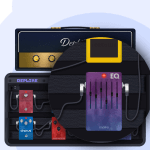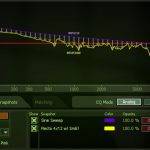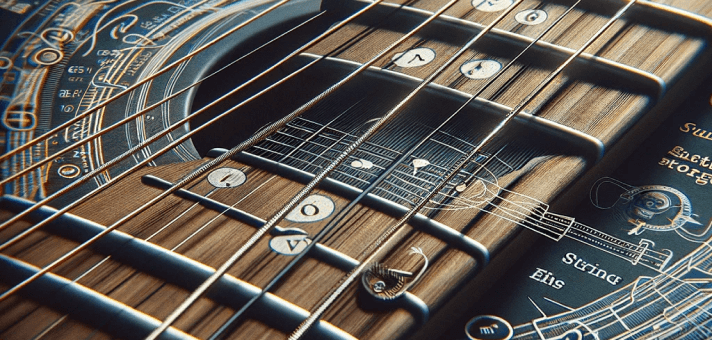4 reasons why digital could never replace analog
There’s a debate about analog-versus-digital over the past few decades and it seems like it will go on and on.
This debate has been discussed in photography for years and the end result is in digital’s favor. Even the most professional photographers are using digital cameras (DSLR), digital editing software like photoshop, digital galleries like Instagram, Tumblr, Flickr these days and nobody’s complaining.
What about the music?
Does pro-musicians prefer digital or analog while crafting their art?
What is the most common medium to consume music?
And finally, how far can digital go?
I broke this debate down into 4 categories for the sake of being just.
Spoiler alert, “Digital is taking over, will take over more areas and I’m very happy with it as an Audio Engineer”.
Here’s why
1- History
Let’s start with what we are talking about when we say digital and analog to narrow down this debate.
We are talking about mostly the sound, sound waves, sound processing, sound delivery.
In general, a sound (a signal) travels a closed-loop from human to human. It starts with someone’s action (singing, yelling, playing an instrument, pushing a button, etc…) and ends in the ear.
Let’s say you are living in the Medieval Era.
The only thing you have in your body. You generate the sound, it is delivered via the space that you’re in, you hear it with your ears. All analog (or is it?). I prefer the term “Acoustic”. 100% Acoustic.
You’re in the early 1900s.
There’s radio, therefore, there’s electricity. You generate the sound, it’s captured with a microphone. Now your sound is not sound waves anymore. It’s alternating electric current. Then this electric current is converted to radio waves. Thus it is delivered via radio. Your radio receiver receives it, reverse it back to electricity and then to sound waves thanks to its speakers. You hear it with your ears. All analog right? Not quite right. In my point of view, analog started to take over the areas of “Acoustics”. Especially the delivery side.
50% acoustic
50% analog signal.
You’re in the mid-1900s
when the sound could be recorded rather easily to vinyl discs and tapes. It is delivered to you with radio waves, TVs, trucks, and ships. You listen to them with your electric driven radios, record players, TV channels. Delivery becomes the longest part of the life-cycle of a “sound”. Sure, it’s analog. Mainly electric not “acoustic”.
80’s.
When the digital age starts. The sound was still recording tapes. But burned to digital Compact Discs (CDs) right after. It is delivered to you still using ships and trucks. You listened to them with your digital CD player. The first point where the analog loses its share. Digital starts to dominate from the consumer’s end.
50% acoustic
40% analog
10% digital
90’s.
We see the first examples of digital processing and digital recording. Analog gears have been replaced by the digital ones inside the studios. Tape recorders were replaced by digital computer-based HDD recorders. Now the sound is 1s and 0s from the very first beginning of its delivery life-cycle.
Acoustic keeps its 50% share
30% analog
20% digital
2000’s.
Seems like studio guys started to abandon their analog tone-shaping tools (which was always electric anyways). Equalizers, compressors, delays, reverbs everything starts to digitalize. Digital is getting stronger on the “sound generation” stage. We also started to see compressed audio files like MP3. Delivery is digital’s strong suit now. It’s easier, faster and cheaper.
50% acoustic
20% analog
30% digital
2010’s.
Every Grammy Winning song is created inside a computer nowadays. Written inside a computer. Shaped inside a computer. Mixed inside a computer. Burned inside a computer. Delivered through a computer. Listened through some kind of a computer.
50% acoustic
10% analog
40% digital
Acoustic experience is going nowhere. It’s part of the magic. Digital can never get in the way between you and the sound. But it’s dominating every area that analog used to dominate. Unless direct neurotransmission between human and computer is discovered, you rely on your ears and the speakers.
Analog keeps its importance at the micro-level. Every digital step starts and ends with a little analog device called a “transistor”. Oh hey, isn’t it the digital processors made out of?
2- Purpose
Let’s not be fanboys and fangirls for a second and think about why sound needs to be converted to analog form or digital form, from its main “acoustic” form. The main purpose is recording it to play it back later.
When you record a sound to analog tape, the tape will add its own “thing” to what’s been recorded. It compresses the dynamic range, colors the sound. The same thing happens with vinyl too.
When it comes to playing back the music from a tape or from a vinyl, every time it spins, the sound drifts away from its original tone. Because the material of the tape and vinyl degenerates with friction. So it’s not faithful to the source. It’s not the same sound as the musicians intended to be no matter how “sweet” it is.
Digital, on the other hand, can be played back infinite times without degradation. It doesn’t color the sound even while recording. It helps to reduce the variables of total experience by being faithful to the source.
Loving the additional “analog thing” is something but it’s not serving the purpose.
3- Scientific Superiority
Early stages of digital interpretations might lead to the impression that digital sounds weak, cheap. Just like the first digital cameras being insufficient. There’s a term for it. 8-bit. And there’s a reason for it. Again it was 8-bit. Today, technology is so advanced that digital audio resolutions can go beyond the natural human hearing. So, “it sounds digital” is not a relevant argument anymore. Let me explain why.
Dynamic Range
Analog FM broadcasts rarely have a dynamic range exceeding 50 dB.
Consumer analog cassette tapes may have a dynamic range of 60 to 70 dB.
The dynamic range of a direct-cut vinyl record may surpass 70 dB.
Analog studio master tapes using Dolby-A noise reduction can have a dynamic range of around 80 dB.
Whilst,
A 24bit digital .wav file can reach up to 144 dB.
Let’s add the noise floor to both sides of the equation. Analog systems have greater noise than digital systems. So, digital is far more superior than analog in terms of signal to noise (S/N) ratio. That means, in a digital system, there’s more headroom for music.
4- Nostalgia

The music experience heavily depends on the place and the time. When and where you listen to a song, play an instrument plays a big role in how much you enjoy it. It becomes a memory registered with this information.
Maybe you were a child when you first listened to AC/DC and it was through a record player that sits on your parent’s living room. You were with your girlfriend or boyfriend. You listened to The Beatles for the first time on the radio when you were at the beach. Listening Radiohead on your Walkman while you were walking down the school thinking about the problems of your life.
Remember the experience, you want to live it over and over again. Also, you try to replicate all the variables as much as you can to feel the same when you listen to music.
It leads to devotion to the surrounding materials. You start to think that “that record player” is part of the magic, cassette sounds warm, radio has a charm. And you begin to think that “It’s because of analog”. “All of these devices were analog, so analog must make me feel the way I used to feel”.
Actually, those memories are warm, magical and charming.
Just like today’s kids (tomorrow’s naysayers to newer technologies) are experiencing the same warmth with their iPods. Sharing good times with their friends while shuffling through the songs on a Spotify Playlist. Playing their electric guitar in front of a computer, recording themselves to post it on Instagram or Youtube to impress their crush. Those kids will remember iPod, Spotify, Instagram as warm as the previous generation remembers record players, Walkmans.
I guess nobody will miss CDs and CD players 🙂
Verdict
I always think that defending a subjective matter is pointless. So I tried to make this debate as objective as possible. There’s an inevitable trend towards digital solutions.
Yes, digital is taking over. Historically and scientifically. As technological trends pass by those who live in that generation will continue to resist the change. That’s who we are.






